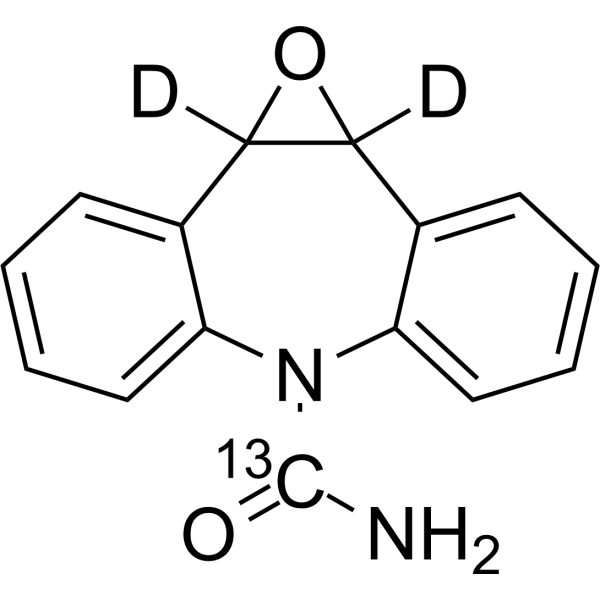Carbamazepine 10,11-epoxide-13C,d2
Modify Date: 2024-01-04 20:37:39

Carbamazepine 10,11-epoxide-13C,d2 structure
|
Common Name | Carbamazepine 10,11-epoxide-13C,d2 | ||
|---|---|---|---|---|
| CAS Number | 1189497-48-0 | Molecular Weight | 255.27 | |
| Density | N/A | Boiling Point | N/A | |
| Molecular Formula | C1413CH10D2N2O2 | Melting Point | N/A | |
| MSDS | N/A | Flash Point | N/A | |
Use of Carbamazepine 10,11-epoxide-13C,d2Carbamazepine 10,11-epoxide-13C,d2 is the deuterium labeled Carbamazepine 10,11-epoxide-C13. Carbamazepine 10,11-epoxide-C13 is a 13C-labled Carbamazepine 10,11-epoxide. Carbamazepine 10,11-epoxide is an orally active metabolite of Carbamazepine (HY-B0246). Carbamazepine has anticonvulsant effect. Carbamazepine can be used for the research of seizures[1][2]. |
| Name | Carbamazepine 10,11-epoxide-13C,d2 |
|---|
| Description | Carbamazepine 10,11-epoxide-13C,d2 is the deuterium labeled Carbamazepine 10,11-epoxide-C13. Carbamazepine 10,11-epoxide-C13 is a 13C-labled Carbamazepine 10,11-epoxide. Carbamazepine 10,11-epoxide is an orally active metabolite of Carbamazepine (HY-B0246). Carbamazepine has anticonvulsant effect. Carbamazepine can be used for the research of seizures[1][2]. |
|---|---|
| Related Catalog | |
| In Vitro | Stable heavy isotopes of hydrogen, carbon, and other elements have been incorporated into drug molecules, largely as tracers for quantitation during the drug development process. Deuteration has gained attention because of its potential to affect the pharmacokinetic and metabolic profiles of drugs[1]. |
| References |
| Molecular Formula | C1413CH10D2N2O2 |
|---|---|
| Molecular Weight | 255.27 |